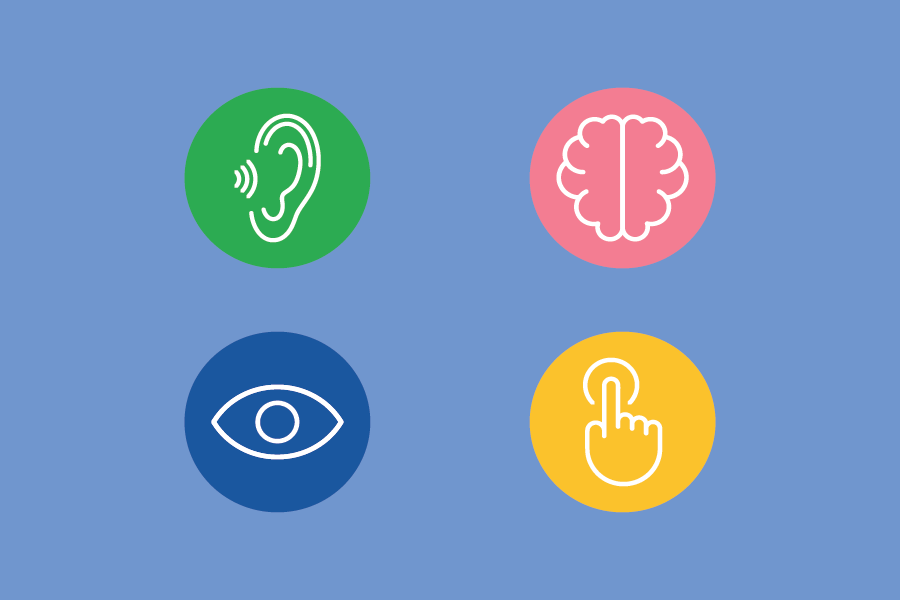Making course content accessible through a variety of means often translates into a curriculum that presents information in multiple formats and media at the same time, provides multiple pathways to the same objectives, and multiple ways to engage (with) students (Meyer & Rose, 2002).

1. Think Universal Design for Learning
Universal Design for Learning (UDL) means maximizing our effort to remove all physical and cognitive barriers to learning, to ensure every student gets an equitable opportunity to participate in the learning experience and achieve the intended learning outcomes (Council for Exceptional Children, 2005).
Tools
- UDL Graphic Organizer
- Online tools are available to help you further explore one’s learning strengths and needs
- Emergency Remote Instruction Checklist (Teaching Effectively in a New Environment section)
Resources
- Student Accessibility Services
- Universal Design for Learning Guidelines
- Ensuring Accessibility to All
- Considering the Needs of Diverse Learners
- Centre for Human Rights Training Sessions
- Learning Skills Services
- Student Survey Results (Challenges with the Remote Environment)
- Look at our comprehensive YorkU Guide for Remote Teaching for more on Universal Design for Learning and Universal Design for Learning
Best practices
- When focusing on the course learning outcomes, instructors are able to maintain high expectations for students while opening multiple pathways towards achievement.
- Consider the various approaches and methods that you can share to deliver course content and engage students.
- Think about how students can demonstrate their level of understanding and achievement of course learning outcomes through varying forms of assessment.
- Be aware of unintentional barriers (e.g., the speed of a lecture or a tight turn around time for an assignment) and think of ways to remove these barriers for all students.
2. Offer content in a variety of formats
Learning occurs when multiple representations are used to deliver curriculum. These varying mediums allow students to make connections within as well as between concepts. Providing options for representation of content is essential as there is no one size fits all approach that will be optimal for all learners
Tools
- You can enable Zoom to automatically generate a transcript
- Use an accessibility checker when using Word or Adobe Acrobat before uploading your documents
Resources
- Accessibility in Teaching and Learning
- Visit the Centre for Applied Special Technology (CAST) for guidelines on providing options for representing information
- Accessibility Services, York University Libraries
- Ensuring Accessibility to All
Best practices
- Some students use alternate format material in order to access their readings using technology. It may be necessary to have the text converted to an appropriate format so that it can be read by a screen reader.
- If you are posting video content for your class, videos should have closed captioning or transcripts made available. Refer to Create and Share Content for more information.
- Use an accessibility checker when using Word, Power Point, or Adobe Acrobat before uploading your documents.
3. Invite participation in various ways
There is not one means of engagement that will be optimal for all learners in all learning contexts - face-to-face or online. Providing multiple options for student engagement is essential and will provide a more accurate depiction of student learning.
Resources
- Visit the Centre for Applied Special Technology (CAST) for guidelines on providing options for action and expression of learning
- Visit the Centre for Applied Special Technology (CAST) for guidelines on encouraging various modes of engagement
Best practices
- Involve students in the setting of their own personal academic and behavioral goals.
- Provide tasks that allow for active participation, exploration and experimentation.
- Invite personal response, evaluation and self-reflection to content and activities.
- Include activities that foster the use of imagination to solve novel and relevant problems, or make sense of complex ideas in creative ways.
© Blended and Online Learning (BOLD), Teaching Commons & Learning Technology Services, York University. Unless otherwise stated, all content on the Going Remote - York University site is licensed under a Creative Commons Attribution-NonCommerical 4.0 International license. If you reuse this work, please attribute BOLD, York University and include a link to https://yorku.ca/bold/
Icons created by Font Awesome

